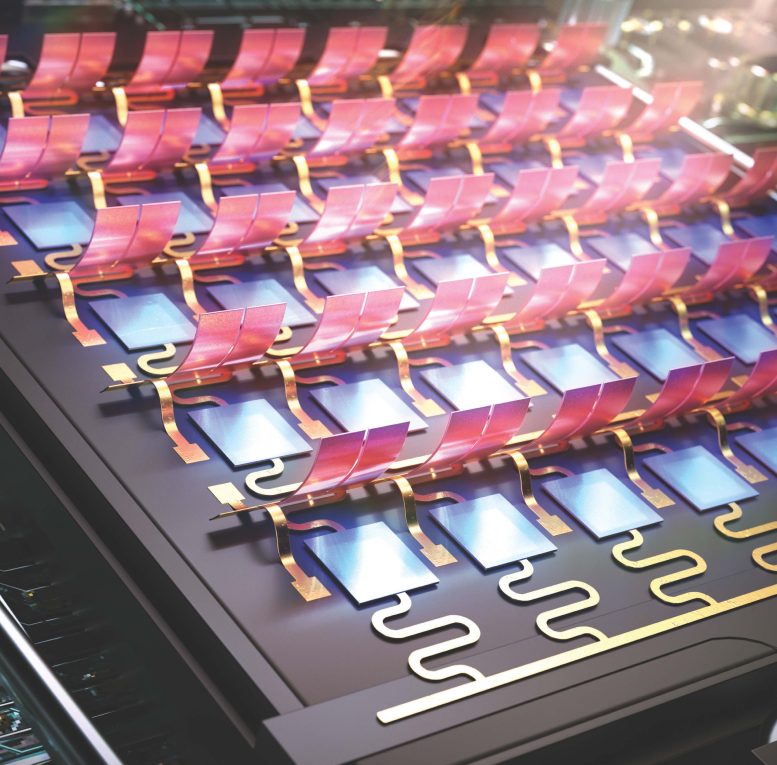
By Daegu Gyeongbuk Institute of Science and Technology October 30, 2024
Collected at: https://scitechdaily.com/game-changing-3d-smart-energy-device-could-greatly-cut-global-energy-consumption/
DGIST’s 3D Smart Energy Device, capable of both heating and cooling, offers an energy-efficient solution for buildings and electronics.
A research team from the Department of Robotics and Mechatronics Engineering at DGIST, led by Professor Bonghoon Kim, has developed a “3D Smart Energy Device” with dual-function reversible heating and cooling capabilities.
The team collaborated with Professor Bongjae Lee from KAIST’s Department of Mechanical Engineering and Professor Heon Lee from Korea University’s Department of Materials Science and Engineering. Their innovative device was officially recognized for its excellence and practicality through its selection as the cover article of the international journal Advanced Materials.
Heating and cooling account for approximately 50% of the global energy consumption, contributing significantly to environmental problems such as global warming and air pollution. In response, solar absorption and radiative cooling devices, which harness the sun and outdoor air as heat and cold sources, are gaining attention as eco-friendly and sustainable solutions. While various devices have been developed, many are limited in function, focusing solely on heating or cooling, and large-scale systems lack adjustability.
Development of a Dual-Function Solution
To address these limitations, Prof. Kim’s team created a “3D Smart Energy Device” that integrates reversible heating and cooling functions in a single device. The device operates on a unique mechanism: when the 3D structure opens through a mechanical peeling process, the lower layer—made of silicone elastomer and silver—is exposed to generate radiative cooling. When the structure closes, the surface coated with black paint absorbs solar heat, thus producing heating.
The team tested the device on multiple substrates, including skin, glass, steel, aluminum, copper, and polyimide, and demonstrated that adjusting the angle of the 3D structure enabled control over its heating and cooling performance. This ability to modulate thermal properties offers an efficient and promising solution for reducing energy consumption in temperature-controlled buildings and electronic devices at both macro and micro scales.
“We are honored to have our research selected for the cover article of such a prestigious journal,” said Professor Bonghoon Kim. “We aim to ensure that these findings are applied in industrial and building settings to help reduce energy consumption.”
Reference: “Reversible Solar Heating and Radiative Cooling Devices via Mechanically Guided Assembly of 3D Macro/Microstructures” by Su Eon Lee, Junyong Seo, Simon Kim, Jun Hyun Park, Ho Jun Jin, Janghun Ko, Jang Hwan Kim, Heemin Kang, Jin-Tae Kim, Heon Lee, Bong Jae Lee and Bong Hoon Kim, 28 June 2024, Advanced Materials.
DOI: 10.1002/adma.202400930

Leave a Reply